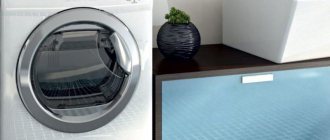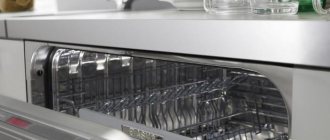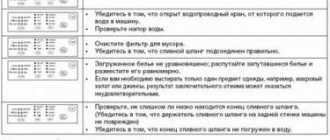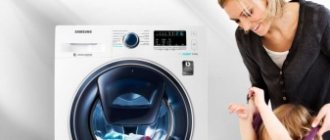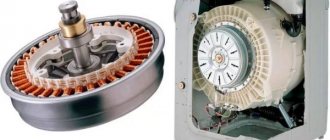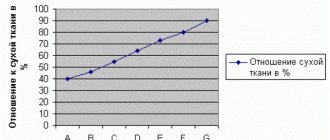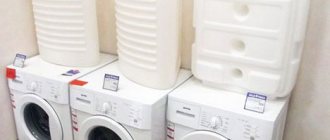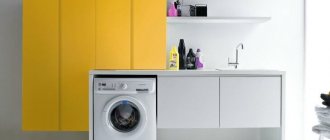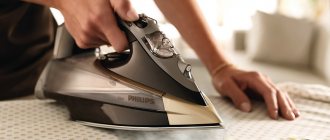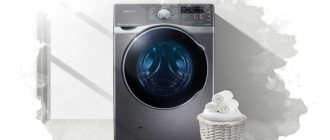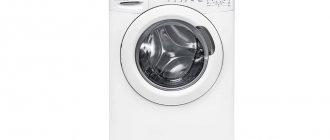There are many arguments in favor of dryers: these devices save time, space and nerves - especially when it starts to rain and you have to quickly remove half-dried items from the lines. However, what model should a clothes dryer have? Which one is more suitable for you, meeting your needs and matching your capabilities? We will tell you about seven golden rules that you should consider when choosing a dryer.
Maximum load: how much laundry you will have to throw into the drum of the device also depends on what kind of washing machine you have
Tip 1: match the size of the washing machine
Since fabrics become noticeably heavier after washing, the dryer should be more spacious. If your washing machine has a 6kg capacity, you will need a dryer that can hold eight or nine kilograms. Based on practical experience, it is generally accepted that for a person living alone, a dryer with a capacity of three to five kilograms will be sufficient. A couple of people may need a device with a capacity of five or six kilograms, but for a whole family they will have to buy a dryer designed for seven to nine kilograms of laundry.
Tip 2: Vent Dryer or Condenser Dryer?
Vented dryer: vents moist air outside
Often the type of dryer (vented or condensing) is determined by where you can place the dryer. Both types remove moisture from laundry using heated air. A ventilation-type dryer exhausts moist air through a special tube to the street. You will need to either attach it to the window or connect it to the ventilation system. Accordingly, such models are not suitable for installation in a pantry or basement without windows. In these cases, condensation-type dryers are used to cool the humid air by collecting water in a special reservoir, which must be periodically emptied.
There are also differences in cost: while prices for ventilation dryers start at 14 thousand rubles, for a condensing machine you will have to pay an average of 7 thousand rubles. more. As an example, let's take the Gorenje D 624 B, which costs approximately 18 thousand rubles. But in most cases, a ventilated dryer consumes more electricity than a condensing dryer.
Dryer design
Clothes dryers have a fairly simple design. We'll tell you what most condenser dryers look like.
- Control Panel. It contains an electronic display, a program selector, depending on the type of clothing, and buttons for additional functions.
- Drive belt connecting the motor to the tank.
- Dryer drum. This is the main element of the dryer in which the process of drying things takes place.
Most electric dryers have a tank light. This helps you track the condition of your laundry and makes loading and unloading easier.
- Electric motor.
- Heat exchanger. In it, cold and hot air flows move simultaneously through two channels. However, they do not mix with each other. This is how the air cools and further condensation forms.
- Heating element (heating element). It heats the air before it enters the clothes drum directly.
- Fan. It helps to capture cold air and sets it in the right direction.
- Container for collecting condensate. It can be located at the bottom of the front panel or where the powder receptacle is located in washing machines. You need to periodically drain the water from it so that the new condensate has somewhere to go.
If the model provides a connection to the drainage system, then the condensate will drain directly into the sewer.
- Air intakes with fluff filters. They collect dust and particles of debris coming with air currents. Filters need to be cleaned at least once a month.
Tip 3: Heat pump dryer to save energy
Heat Pump Models: Energy Efficient, but Expensive
Modern and energy efficient, but more expensive to purchase, heat pump dryers represent the next evolution of condensing machines. Starting from 25 thousand rubles. devices become available that heat the air entering the machine, which passes through the evaporator, where moisture condenses, and the dry air again enters the pump and is heated.
The advantage of the technology is that, compared to a ventilation machine, there is virtually no heat loss. Thus, this type of machine can save the owner up to 50% of the electricity consumed by a “conventional” condenser dryer. At the same time, initially purchasing such a machine is more expensive, and maintenance will have to be performed more often due to the more complex mechanism. In addition, such a device will require more time to dry one batch of laundry than other types of dryers.
Heat pump machines
Asko T208H. W - model with a load of up to 8 kg of laundry and a reversible door.
pros
- Sensidry sensory humidity measurement system;
- Reverse rotation without twisting;
- Drying by time or residual moisture.
Minuses
- Energy class B;
- No drying basket.
V-ZUG AdoraDry V2000 AT2TWHW L with the possibility of installation in a column or niche and a load weight of 7 kg of laundry.
pros
- 13 drying programs with the ability to select the type of fabric;
- Touch control panel with acrylic glass;
- Mounting plate for installation included.
Minuses
- No steam treatment;
- There is no program for down products.
V-ZUG AdoraDry V6000 AT6TWHW li is a model with a load weight of up to 7 kg of laundry and a reduced noise level.
pros
- 26 drying programs, including for children's clothing and multi-layered items;
- Energy class A+++;
- Electronic system for measuring residual humidity.
- There are no visible shortcomings in this model.
Tip 4: Read the information on the label correctly
Nowadays, dryers are no longer energy hogs that send your utility bills through the roof. Every dryer must be affixed with the EU energy efficiency label. It informs not only about the type of device, maximum capacity and noise level, but also indicates its energy efficiency class. These grades range from the best A+++ to the worst Cs.
Unlike devices in other categories, in dryers the difference between energy efficiency classes is huge: the most voracious ones can use 500 kWh more per year than the most economical ones. We made all the calculations for you and this is the result: with the most energy-efficient equipment you can save up to 7 thousand rubles. in year. If you want to replace an old but still working device, you will need to first calculate the difference. If we are talking about the first purchase of a new device, choose energy efficiency class of at least A.
Tip 6: What programs are must-haves?
Ease of control and variety of drying programs: is all this tinsel necessary?
Of course, for the most part it’s a matter of your personal needs and preferences - what programs the dryer should have. Should there be special programs for wool, gentle drying or even down? Should there be a display indicating the remaining operating time and how should this time be determined? Does the device count a certain number of minutes or use sensors to determine the degree of moisture in the laundry? It is humidity sensors that can further reduce energy consumption and prevent over-drying of laundry.
Other features such as internal lighting, sound notification when work is completed or started are frills and should influence the final decision when choosing a specific model only if you really need them. Of course, the simpler the dryer, the cheaper it is. Manufacturers such as Bosch, Siemens, Miele, LG and Samsung are especially generous with additional equipment with options.
Tip 7: What to do about the problem of lack of space?
If you don't have a lot of space, you can purchase a top-loading dryer that loads laundry from the top. As a rule, such devices are narrower than conventional front-loading machines. In addition, the dryer can of course be placed on the washing machine.
For reliable fixation, we recommend using special anti-vibration mats both under the dryer and under the washing machine. Issue price: about 1000 rubles. on Amazon or about the same in hardware stores. Anyone who rarely does laundry may consider purchasing a washing machine with a clothes drying function (from 22 thousand rubles). These devices combine the capabilities of two machines at once and are used quite often when there is little space in the apartment.
Types of dryer
Any dryer works on the same principle: they process things with a stream of hot air, and thanks to this, moisture quickly evaporates from the fabric. But the implementation of this scheme varies depending on the model.
Drum dryers
Videos about the operation of clothes dryers show that in appearance and design, units of this type are similar to washing machines. Things are in a rotating drum, but they are not affected by water, but by hot air, which ensures the evaporation of moisture. Within a minute, the internal tank is capable of making more than a hundred revolutions, drying is fast and high-quality. The advantages of drum models include their compact size.
In the fast drying mode, it takes about 20 minutes to process items in the drum
Drying cabinets
In apartments and private houses, such units are rare - they are too large in size and represent a spacious and tall metal chamber. Drying things in a special cabinet occurs slowly. But the device is ideal for processing outerwear, shoes and fabrics for which mechanical stress is undesirable.
The drying cabinet does not wrinkle things and provides the most gentle treatment
Condensation
Dryers with a condensing operating principle are the most popular. As the name implies, the moisture evaporated from clothing settles in tiny particles inside a special reservoir. After completing the operating cycle, the water from the tray is simply drained and the filter is washed.
The condenser dryer can be placed anywhere in the house
Exhaust
These types of dryers are less popular. The moisture in them, along with the air flow, is removed into ventilation or into the environment - for example, out a window. Exhaust models are cheaper, but their installation is associated with certain difficulties; when positioning the unit, you need to think about where the massive hose will go.
Exhaust dryers take up more space and rarely fit into the interior
Washing machines with drying function
Conventionally, drying units also include washing machines with a built-in moisture evaporation mode. When this function is activated, after rinsing and spinning, the device heats the air using a heating element and supplies it to the empty drum. The main advantage of the units is obvious - there is no need to install two separate devices for washing and drying in the apartment.
The disadvantages of a washing machine with a built-in dryer are low power and high energy consumption
